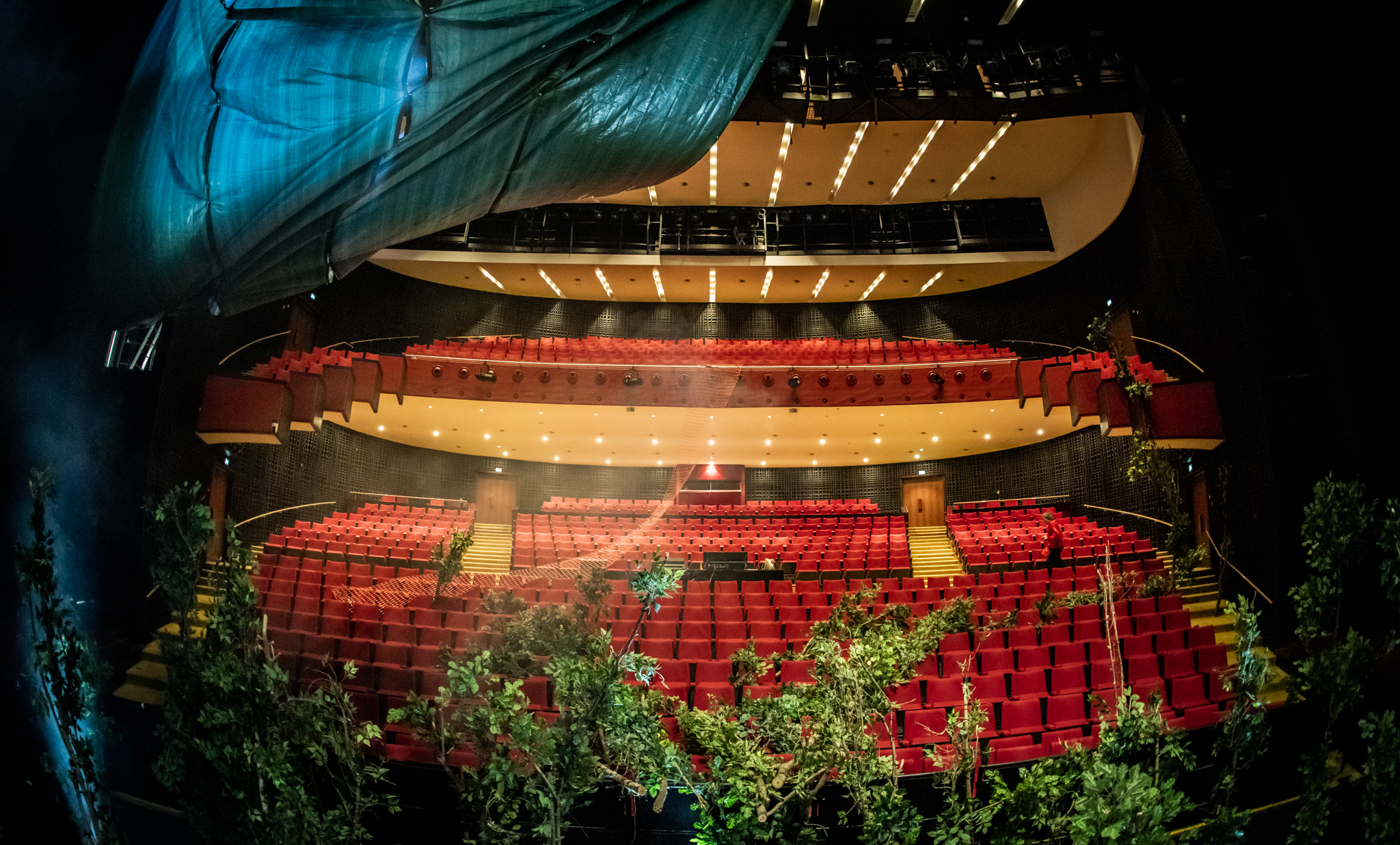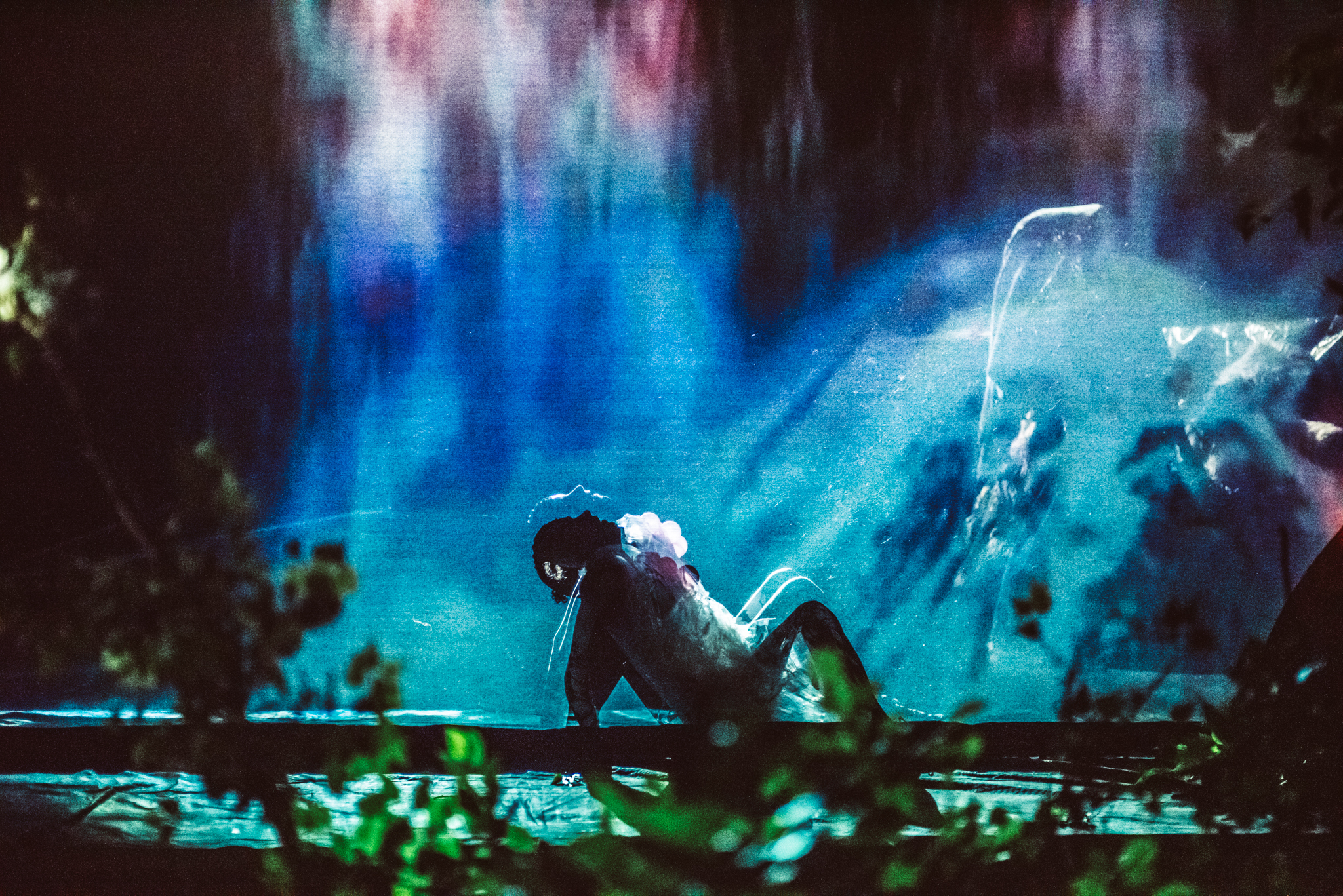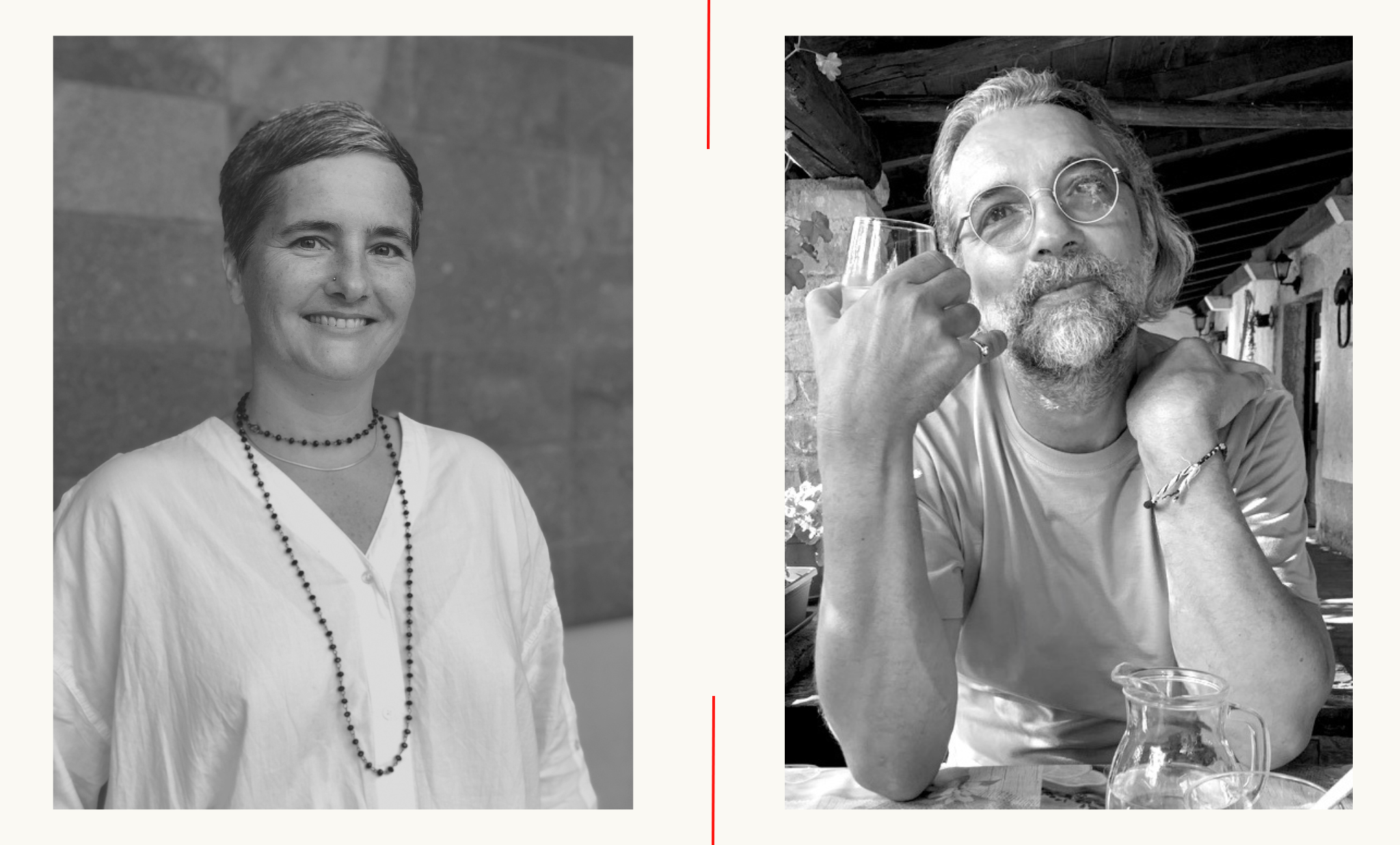On October 18, 2023, the new performance ATMEN by Nicole Beutler Projects will premiere at the International Theater Amsterdam (ITA). The performance is the second part of the trilogy RITUALS OF TRANSFORMATION (towards a new humanity). The trilogy is about the search for a new perspective on humanity in times of the climate crisis. After the end of the (Western) man-made world in GINKGO or: 56 million years ago there were palm trees on the North Pole, ATMEN invites us to experience the abundance and resilience of the earth, and to dream about a possible future.
What is ATMEN?
ATMEN is an installation performance. We fantasize about the earth as a place that is resilient, where cyclical time determines the seasons, where there is potential abundance. A place that may be harsher than how we live now, but where people are in balance with their environment. The play is speculative fiction: we are in the year 2200 or a little later, when the earth is catching its breath (ATMEN means breathing in German). On the way to a new balance between humans, plants, animals, mycelium and technology, we wonder what the place of humans is in this new ecosystem.
The trilogy is called RITUALS OF TRANSFORMATION. What kind of transformation is the trilogy about?
Our world is changing, the climate crisis makes this clearly palpable. The earth is in transformation and if we want to survive, change is necessary. You can see it as an alchemical process, in which a (not so valuable) raw material slowly changes into something valuable. Metal becomes gold - we become better people. We will have to adjust our (Western) values and ideas of constant growth and break open our ingrained patterns. Change is inevitable.
The industrial revolution gave rise to the idea that time is linear and that everything only gets better. This idea is crumbling: time is not linear but circular. We keep going through cycles, each death is followed by a new life.
ATMEN is the middle representation in the triptych. In the first part, GINKGO or: 56 million years ago there were palm trees on the North Pole, we say goodbye to the world made by (Western) man. In ATMEN we are at the moment when the disaster has occurred: humanity has disappeared from the center and the plant, animal and fungal kingdoms are taking over the earth again. In the third part of the trilogy we attempt to achieve a new balance between humans, plants, animals, fungi and technology.
If you had to describe this performance in four words, what would they be?
Abundant, atmosphere, empowering and hopeful.
What kind of space do you welcome the public in?
The theater hall has become a ruin, overgrown by plants. All parts of the performance, including the audience, together form a living ecosystem. The separation between the stage and the stands/spectator is no longer relevant. The viewer can see, feel, smell and hear the place. Electronic music composed by Gary Shepherd is inspired by fungi, reproduction, humidity, water and growing mycelium. Together with smoke, light (projections) and objects, the theater hall turns into a world where inside and outside blur. The space we think we know so well has become an overgrown ruin that gives space to both death (the decay of the theater/human society) and life (everything that has grown on top of the ruin).

Are there any performers to be seen in ATMEN?
Yes, there are two dancers and four singers who appear as hybrid beings, living in the shadows. Their voices sound through the room, like a never-ending echo and a nostalgic remnant of humanity. We become witnesses to their rituals. In ATMEN we look for a new paradise, in which feminine power predominates.
Can you tell us more about the ATMEN production process?
We started this work not in the studio but in the theater. Space is the first protagonist in this work. Sustainable scenography and the metamorphosis of existing material are our guiding principles. For example, we collected most of the decor elements from the storage of Opera Ballet Vlaanderen and reused parts of our own. At the opera in Antwerp and the Parktheater Eindhoven we were allowed to experiment for a week in the theater hall. Together with the scenographer Julian Maiwald, videographer Heleen Blanken, the music and the entire team in front of and behind the stage, the images were created organically, like an ecosystem. Gary Shepherd's music has always been at a very advanced stage from the start of rehearsals. The rehearsals with the performers come next, then we create movements and music based on the set elements. This is essential, because people are no longer the center of attention.
With ATMEN you look at a possible future. Why?
The newspapers are full of reports about the increasingly warming planet, climate disasters and the need to combat the climate crisis. Many have apocalyptic thoughts about the future: that we as humanity will become extinct on an unlivable planet. It is becoming increasingly difficult to see the future. That can make you desperate. The trilogy tries to tackle these doom scenarios by first seeing our fears and then thinking and fantasizing. GINKGO was the end of the (Western) man-made world. AMEN invites us to experience the abundance and resilience of the earth, and to dream about a possible future. Perhaps we are able to change as part of a world we cannot yet imagine.
Can you visit ATMEN if you missed GINKGO?
That's certainly possible, and in a way GINKGO is still present in ATMEN. The ruins from GINKGO in ATMEN are overgrown with wild nature. GINKGO ends with a small tree growing on the waste heaps of civilization. ATMEN zooms in on the tree and creates the beginning of a new world from there.


